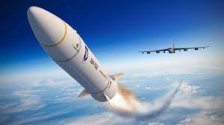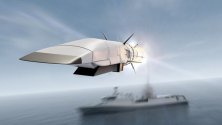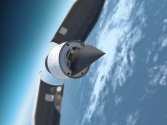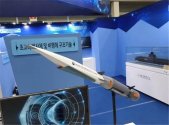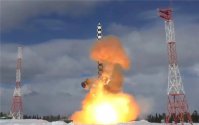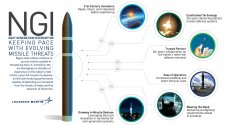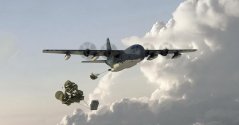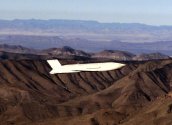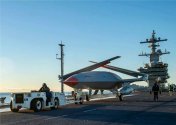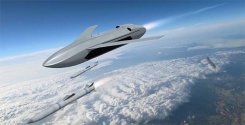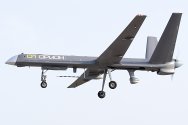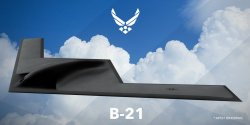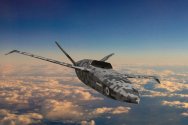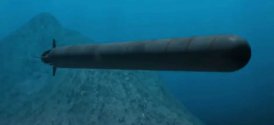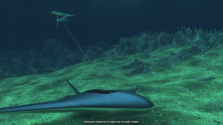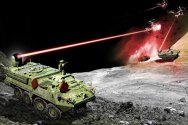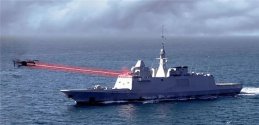Geopolitics in 2022 and implications for China
In 2022, the military game of great powers will get more intense
Today, century-old changes and the epidemic of the century are intertwined and overlapping, and the instability and uncertainty faced by the international security environment has increased significantly. In this context, major powers such as Russia, the United States, the United Kingdom, France, Germany and India have accelerated their military transformation, focusing on key areas to enhance their "edge warfare" capabilities. The year 2022 could become a year when the military game between the great powers becomes more intense.
Strategic weapons take priority
The military game of the great powers is above all a struggle for strategic dominance, and the importance of nuclear weapons in shaping the strategic situation is evident. In 2022, the field of nuclear weapons will still be the focus of the military struggle between Russia and the United States and other great powers. Hypersonic weapons as a weapon to bring about war will become the focus of military technology competition between the great powers.
Unlike the Cold War period, nuclear weapons competition between major powers today pays more attention to advances in the quality of weapons. By 2022, the United States will invest $27.8 billion in nuclear weapons projects, plans to buy Columbia-class strategic nuclear submarines, fly B-21 strategic bombers for the first time, and upgrade nuclear command, communication, and early warning systems;
Russia follows the concept of "key advance, projection priority", will be equipped with 1 Borei-A-class nuclear submarine and 2 Tu-160M strategic bombers, equipped with 21 sets of new ballistic missile systems, and the level of modernization of the strategic nuclear arsenal is expected to exceed 90%. The UK and France will also strengthen their nuclear weapons build as planned this year, or develop new strategic nuclear submarines, or expand the number of nuclear warheads or test new ballistic missiles, seeking to further strengthen their nuclear forces through these measures.
As a leader in hypersonic weapons technology, Russia will deploy the sea-based hypersonic cruise missile "Zircon" this year and will continue to develop new hypersonic missiles such as the "Sharp". The United States plans to invest $3.8 billion this year to develop hypersonic weapons with the unconventional idea of "strengthening the forces of the three armed forces" to catch up with Russia. France, the UK and Japan are also advancing in the research and development of hypersonic weapons. These signs indicate that modern warfare is accelerating in the "seckill" era.
Conventional power upgrade and acceleration
The basis of the great powers military game is to win modern wars, and keeping the forefront of conventional weapons and equipment is an important prerequisite for winning modern wars. In 2022, major powers such as Russia and the United States will accelerate the upgrade of key battle equipment.
The United States will focus on upgrading weapons and equipment in the navy and air force. The U.S. Navy will accelerate the upgrade and installation of weapons and equipment such as Ford-class aircraft carriers, Virginia-class nuclear submarines and F-15EX fighter jets, as planned, and build a state-of-the-art maritime and air equipment system centered on new aircraft carrier platforms and fifth-generation aircraft; Russian military equipment upgrades are in full swing, the army is expected to install more T-14 tanks, the navy will receive 16 large combat ships, the aerospace force and navy will receive more than 200 new or improved aircraft;
The UK will accelerate the equipping of a new generation of "Boxer Dog" armored vehicles, India will continue to promote the real combat deployment of its first domestic aircraft carrier, and Japan will continue to purchase F-35B and upgrade the "Izumo" aircraft carrier.
In the field of electromagnetic spectrum, the US military's building focus this year is to promote the Air Force's electronic warfare project and the Navy's "low-band jammer" project, and further optimize the electronic warfare process through Exercises; the Russian army will receive new electronic warfare equipment, improve the level of automation of the electronic warfare system, and improve the integrated system of electronic warfare equipment at the tactical and strategic level; the British Army will upgrade the electronic warfare systems of the Type 45 destroyers and the Type 26 and Type 31 frigates. The Japanese Self-Defense Forces will continue to promote the combat effectiveness training of the newly created "301st Electronic Warfare Squadron".
Attach importance to the development of smart technology and unmanned equipment
Ultimately, the military game of great powers is a competition of military strength, and the strength of military strength is closely related to the level of science and technology. In today's era, a new round of world scientific and technological revolution and military revolution is accelerating, and the form of warfare is accelerating to intelligent evolution. In order to win future wars, Russia, the United States and other major countries have increased investment in scientific research, researched smart technology, developed unmanned equipment, and explored man-machine coordinated tactics.
The US military prioritizes smart technologies represented by artificial intelligence, machine learning and big data applications, and various military services have launched a variety of smart technology projects. This year, the US military plans to invest $874 million in research and development funds to promote the application of intelligent technology in intelligence, prosecution, logistics, network defense and other fields. The Russian military is currently working on more than 150 artificial intelligence projects. This year, it will focus on adapting smart software for different weapons platforms and doubling its combat effectiveness through smart empowerment. The militaries of France, the UK, India and other countries have also strengthened research into artificial intelligence technology, trying to apply this technology more widely in the areas of intelligence reconnaissance, auxiliary decision making and network security.
In the field of man-machine coordinated operations, the US military is the first to explore and has a certain pioneering advantage. This year, the US military plans to organize the first enterprise-level combat test of unmanned armored forces, explore ways for fifth-generation aircraft to cooperate with unmanned reconnaissance aircraft and drone swarms, and promote coordinated reconnaissance execution, submarine and mine-sweeping tasks between manned and unmanned ships. The Russian army is rapidly advancing in the field of man-machine coordinated operations. This year, continuing to promote the systematic construction of unmanned aerial vehicles and unmanned vehicles, will promote the integration of unmanned equipment into the manned combat system as soon as possible. In addition, French and British troops are also actively exploring man-machine coordinated tactics in military operations such as urban operations.


